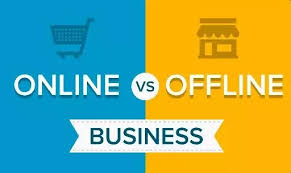We need a strong consumer protection movement in J&K to curb the unfair trade practices hurting consumers severely.
Street Talk
Expert Opinion

Let me share a personal anecdote before dwelling into the changing trends in shopping owing to the integration of advanced technology in business operations.
A few weeks back, my younger daughter asked me to purchase a particular book to support her in the ensuing NEET preparations. She had already done her exercise on the Internet to purchase the book online. As against the price tag of Rs.1575 MRP, the online seller was offering the book at a discounted rate of Rs.1200 and with no courier charges.
Before we could place the order with the online seller to procure the book, I asked her if the book was available in the local market and let us purchase it locally. She was affirmative. I immediately rushed to a prominent bookseller in the city centre to purchase the book. Luckily, the book was available with the bookseller. When I asked about the discounted price, he offered the book at a discounted rate of Rs.1400 as against MRP of Rs.1575. I told him that online booksellers were selling the same book at Rs.1200 and with no courier charges, the bookseller bluntly refused to accept anything less than Rs.1400.
I tried to make him understand that if the same book was available at Rs.1200 why should I buy it at Rs.1400. In fact, I told him the book should be priced lower than the online price tag as courier charges can be added further to the discounted component.
When I told the bookseller that they are losing the business by not aligning their prices to the discounted pricing available in the online shopping mode, the bookseller in a most disrespectful way said, We are comfortable with our pricing mechanism. Go and get the book from online. It won’t affect us.
The above narrated incident reverberated in my mind when I came across innumerable unique posts on the social media platform appealing to the general public to shun online shopping habits and support local businesses/shopkeepers. Even some heads of the local trade associations are taking to social media channels to appeal to consumers to make local purchases instead of going for online shopping.
In a way, the appeal sounds genuine as there won’t be a flight of money to outside markets. But the ground situation does not support their request. It is not rocket science to identify the reason. It is simple. Most of the local businesses in one way or the other resort to unfair trade practices. Here the markets are simply the sellers’ market – a market where sellers (shopkeepers/business establishments) dictate prices of commodities arbitrarily and that too under the nose of authorities.
Now coming to the changing trends in shopping. Today, we find a drastic change in spending and shopping patterns of the consumers. The most visible change in the consumer market landscape is the use of e-commerce and other digital platforms. A vast percentage of consumers, particularly the millennial segment are click-happy to make online purchases. The online shopping trend is catching up fast among the consumers not because it’s convenient to make purchases while sitting at home, but because the discounts and other offers lure them to board the online shopping platforms. However, consumer behavior varies among different consumer segments.
Ours is a place where within one city, a particular brand of consumer products have different rates. In other words, all is not well with the consumers in J&K. For instance, it becomes very difficult for consumers to check whether retailers are actually charging the right amount of local taxes on the products they sell or they are overcharging. This has led to a situation where the confusion in respect of prices of the goods is natural for the consumer. The trader in league with the manufacturers of products most of the time arbitrarily fix the price and the consumers are forced to purchase goods at higher costs.
Charging over MRP (maximum retail price) even in branded products pinches a common consumer but he is helpless to counter the retailers’ profiteering practices. Even as manufacturing companies have consumer grievance cells in place to resolve such issues, they have proved toothless tigers. No manufacturer would like to see a reduction in sales by annoying a retailer. They turn blind eye to malpractice and don’t take any action on consumer complaints.
Notably, we as consumers should know the difference between the maximum retail price and actual price of the goods. The maximum retail price is inclusive of all taxes and a retailer can sell at a price below the MRP. In fact consumers should always look for retailers who sell below the MRP because the MRP is the maximum retail price allowed for that commodity and not the actual price and a retailer can well reduce his margin built into the MRP.
Precisely, In J&K markets, it is an established practice, though illegal, where the manufacturer increases the price of a product and sells old stocks/products at new price rates. But this new price does not apply to the stock already with the retailer. And this is where retailers try to make a quick buck by trying to sell the old stock at the new revised rate. So this is simply an unfair trade practice.
Now let’s have a look at the exploitation of the inflation fears. Here the price control mechanism has been thrown to the winds as traders and merchants stamp their own prices on the commodities to rob the consumers of their hard earned money. It’s more ironic that none of us, as consumers, is vocal to resist the skyrocketing prices of essential commodities, be it grocery items, food grains or vegetables.
Let me explain. The rise and fall in prices has a lasting effect on the cost of living of the common man. Cost of living is the price of goods and services required for maintaining an average level standard of living and varies from place to place, and fluctuates from time to time. It has a direct bearing on the prosperity of an individual.
When the cost of living goes up, the social structure of a common man too takes a hit, exposing him more to complexes. As far as essential commodities are concerned, we have two categories. One is the traditional category of essentials and the second constitutes modern living essentials. The immediate impact of price rise is that it limits the access of common man only to necessities. Modern living essentials have become a luxury for him. While negotiating the situation, a common household engages more and more members of a family.
Normally, the price rise is attributed to the factors like rapid growth of population, increase in incomes, rising non-development expenditure of the government and increase in money supply, on the demand side. And on the supply side inadequacy of agricultural output, inadequacy of industrial output and high-priced imports are listed in the price hike. But ours is a place where the hike in prices is not based on economics. It’s the writ of the supplier which runs, pricing the commodities arbitrarily. We as consumers are left with no option but to pay the illogical prices of the essentials as we have no other option before us.
In short, we need a strong consumer protection movement in Kashmir to curb the unfair trade practices hurting common man’s pockets severely. The local traders have no option but to fall in line with the changing consumer behaviour to stay afloat in the business. Their mechanism of pricing the products has to be competitive to drive the consumers from online shopping to offline (local) shopping mode.
(The author is former Head of Corporate Communication & CSR and Internal Communication & Knowledge Management Departments of J&K Bank).


